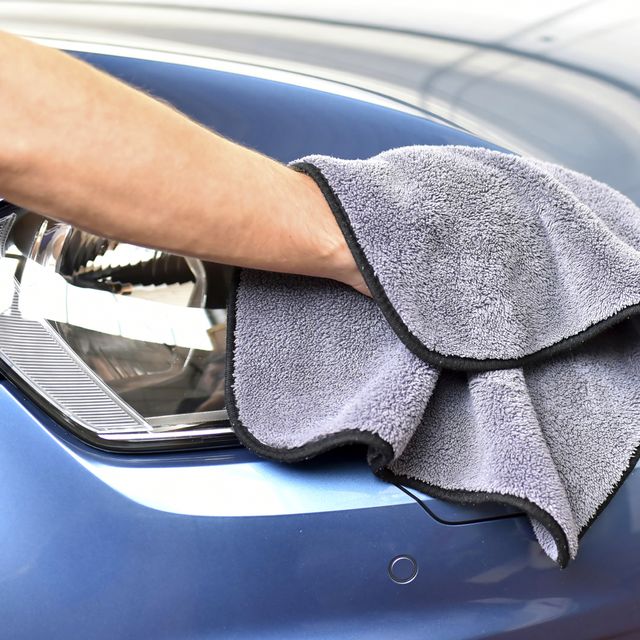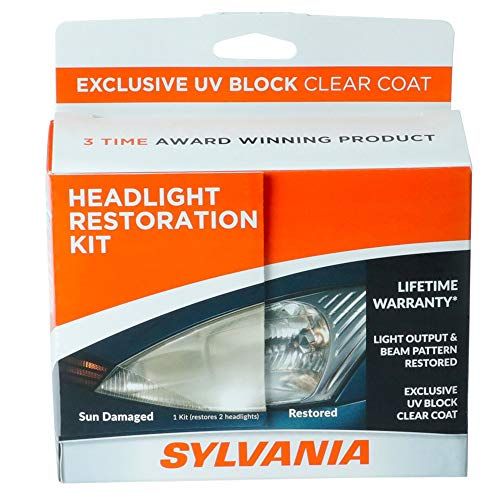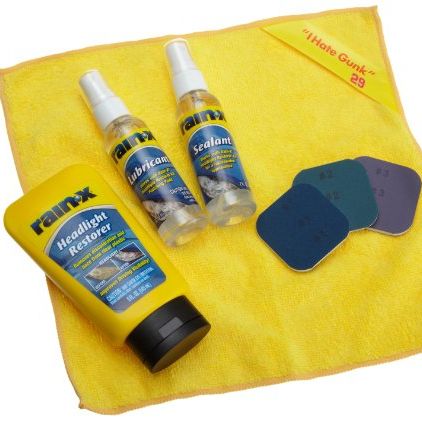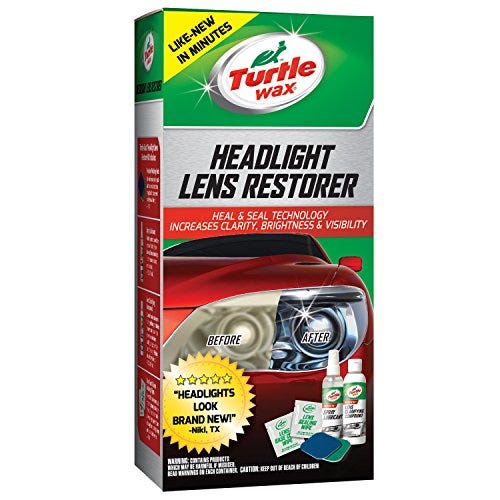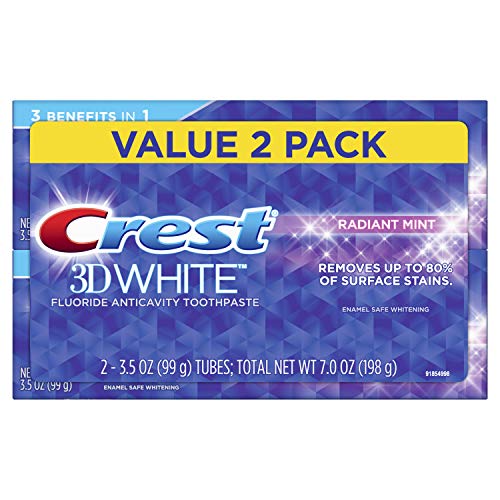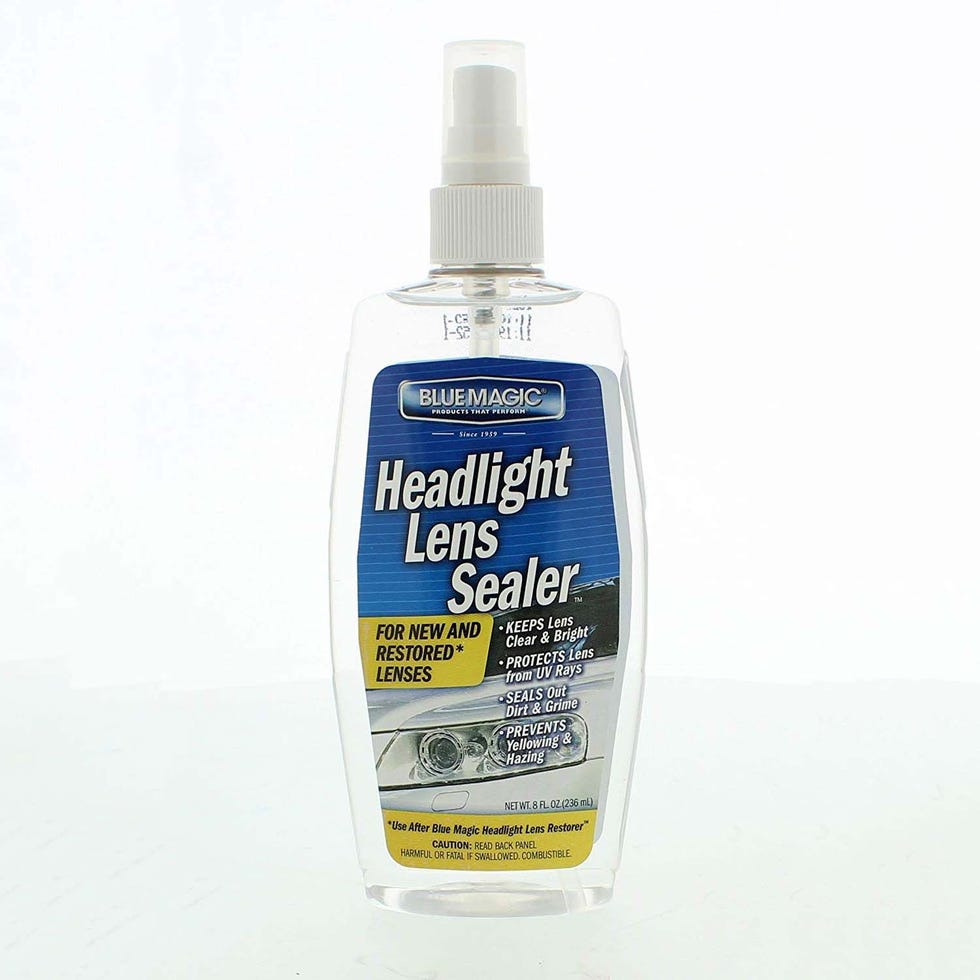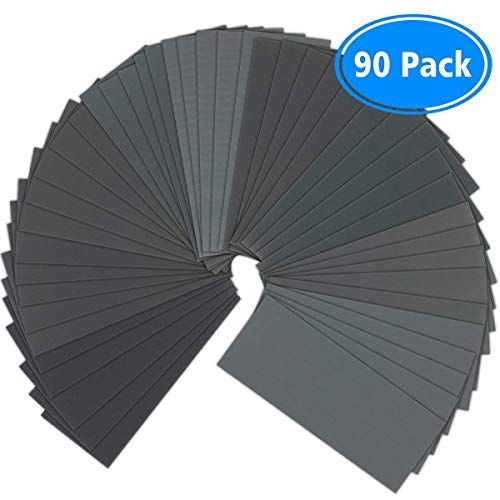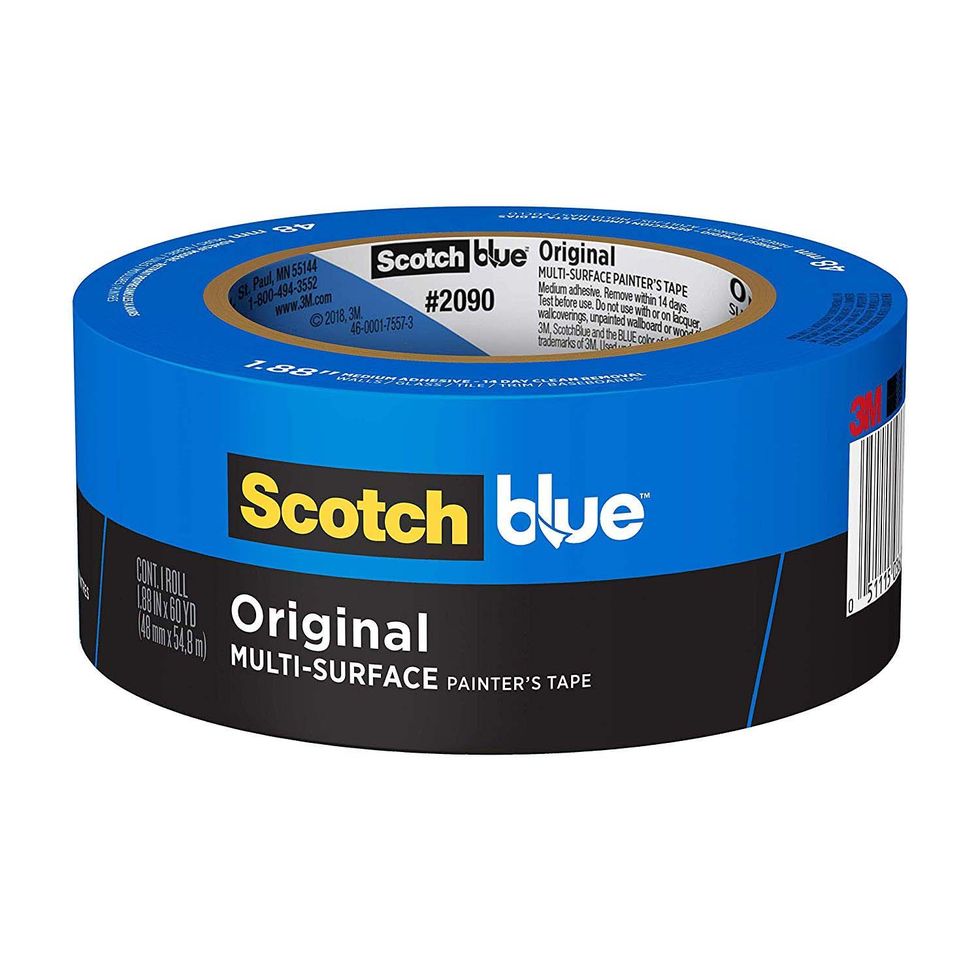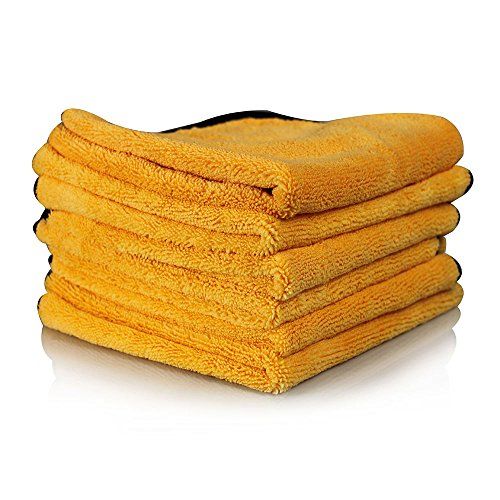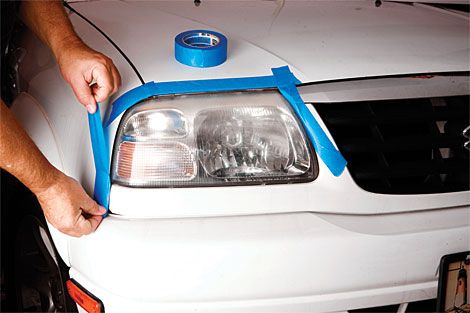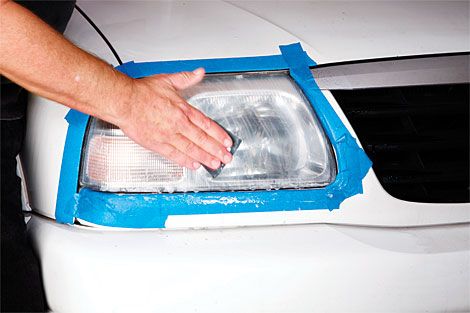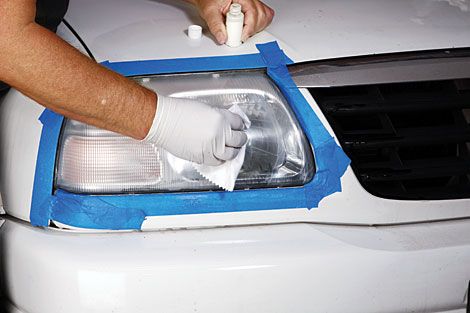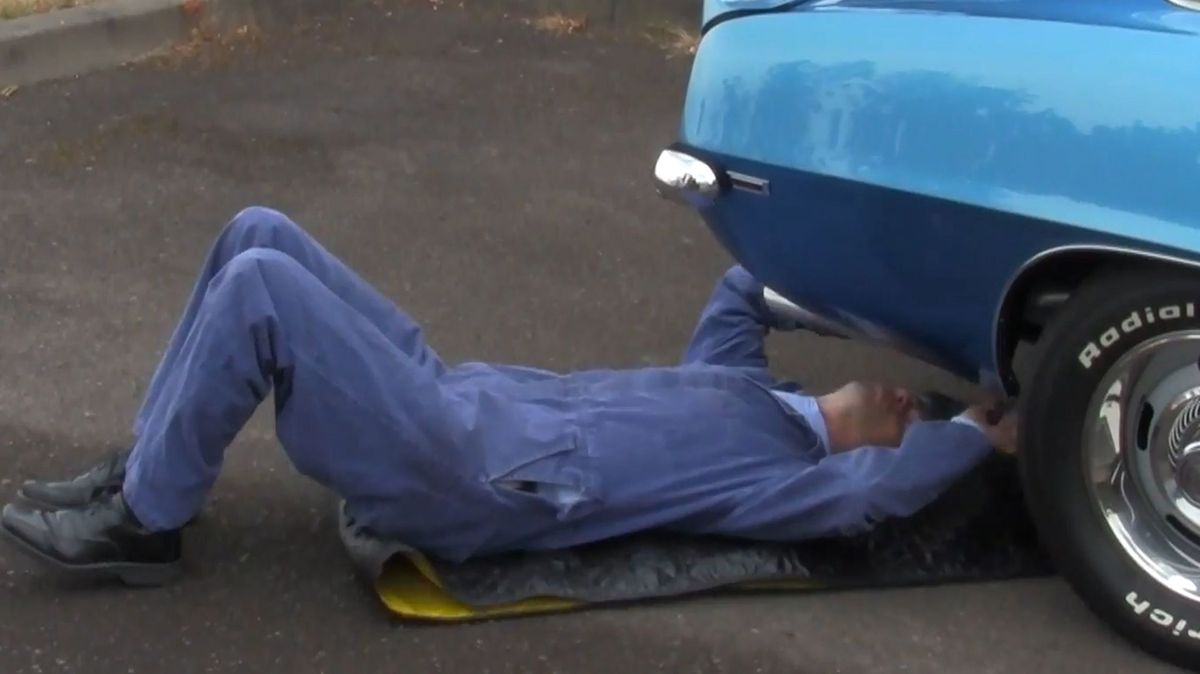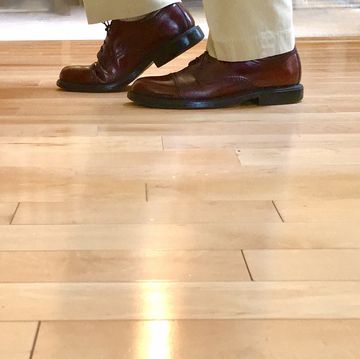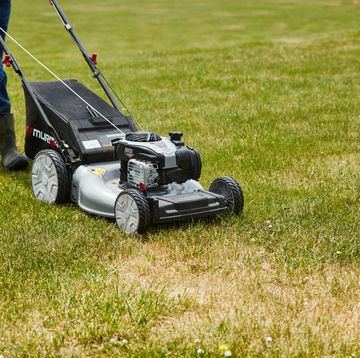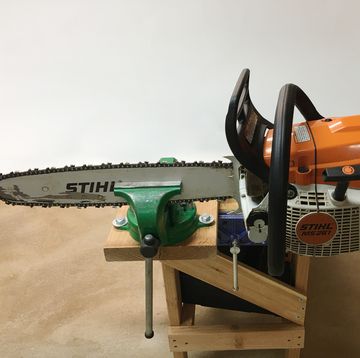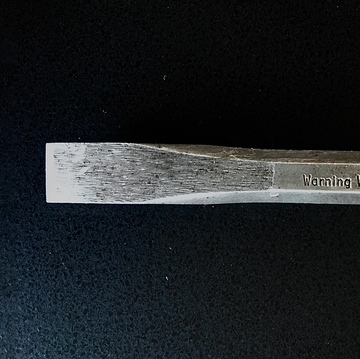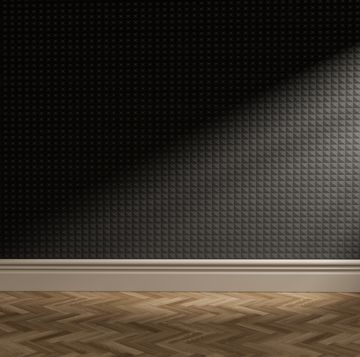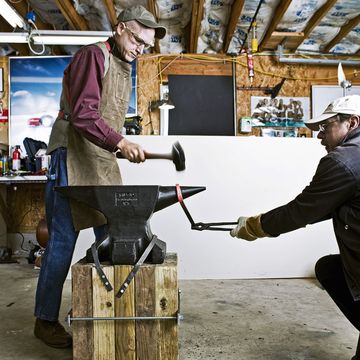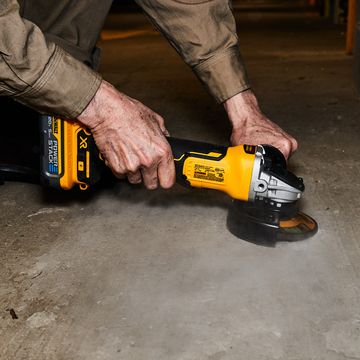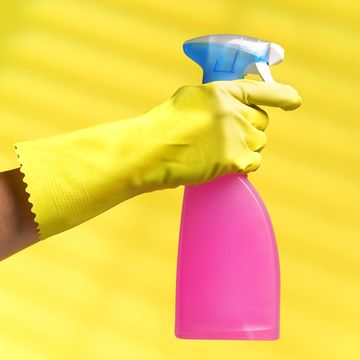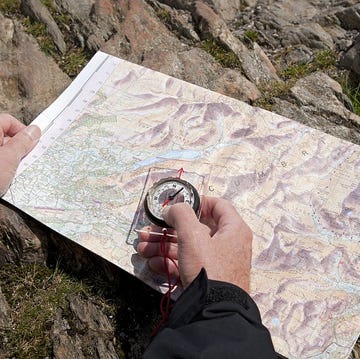Headlights are the most important things to keep clean on your car. Not only do these powerful beams let you see the road, they let other motorists see you.
Most headlight lenses are made of polycarbonate plastic. This strong plastic is perfect for taking on harsh road conditions without breaking, which you definitely want, but it doesn’t play well with the sun. To protect it initially, manufacturers coat the lenses with a UV protective film. But over time this film is destroyed by UV rays, allowing the plastic to oxidize.
➡ You love badass vehicles. So do we. Let’s nerd out over them together.
If your headlights have started to haze over or become yellowish, then it’s clear the oxidation process has begun. Don’t fret though, because getting those headlights looking new again is an easy DIY task. Follow the steps on how to restore your headlights that we’ve laid out below and you’ll get your night vision back to factory fresh in no time.
Step 1: Buy What You’ll Need
Start by making sure you have the supplies you’ll need. The simplest way to do that is to grab a headlight restoration kit, which will include all the necessary materials. We just tested a few of the most popular kits on the market to help you decide which one is best for you. (They all work about the same way, which we’ll describe below.)
You could also individually buy the products that would come in those boxes, which is smart for people who might already have some of the parts. Basically, you need a few different grits of wet/dry sandpaper (1000, 2000, and 3000 grit are typically safe bets), polishing compound, paste wax, and a UV sealant. A roll of blue painter’s tape and microfiber towels should also be on your shopping list.
Step 2: Get Your Headlights Clean
The first step will be a thorough washing of the headlight lenses with car soap and water. You might want to wash the surrounding areas a bit, too, so that the tape will stick during the next step.
Step 3: Tape Off the Headlights
You’ll be sanding in a minute, and it’s important that you sand only the lenses and not the surrounding paint or trim. So use the painter’s tape to completely block off the headlight and protect the rest of the car. When your hand slips and you accidentally run rough sandpaper over the painter’s tape, you’ll be glad you took the time to do this.
Step 4: Sand Away
Welcome to the pivotal step. The sanding process is the same whether you bought the kit or just the materials.
You’ll want to start with the most abrasive sandpaper option you have. If you followed our advice and got 1000, 2000, and 3000, for example, reach for the 1000 grit (lower numbers mean more abrasive). Wet the sandpaper and the headlight, then sand the lens in straight, horizontal strokes. Sand in the same direction the whole time with this first one. Make sure you keep the surface wet as you work – otherwise you risk badly scratching the lens due to grit particle buildup. Your results will depend on how good of a job you do in this stage, so don’t be afraid to spend 5 to 10 minutes hunched down there.
Repeat the process with the less abrasive sandpapers—in our case, the 2000 and then the 3000 grit—and be sure to clean the lens before the next finer grit each time. The only difference with these two will be the direction of your sanding motion. Since you used horizontal strokes with the first sandpaper grit, then you’ll want to sand diagonally across the headlight for this next one. The final sanding should be in the opposite diagonal motion from the one you just did. Take your time and ensure the paper and lens stay wet with water. A hose or spray bottle work wonders here.
Step 5: Polish and Wax
Now it’s time to reveal the fruits of your elbow grease. Wipe off and dry your headlights, then squeeze some of your polishing compound out onto a clean microfiber towel. Rub in the polish for a few minutes using circular motions. You can get through this process quicker if you have and are comfortable using an orbital buffer (but don’t buy one just for this job unless you plan on using it in the future). Once you’ve made the lenses clear again, you can take the wax to it. Wax the lens like you would a car. This will thoroughly clean and protect the lens in preparation for the final step.
Step 6: Use UV sealant
You need to apply UV sealant to your headlights because you removed all of the old oxidized sealant when you sanded. All of your hard work will be for naught if you skip this step, because the sealant is the protective layer that keeps lenses from hazing over again.
This step consists of wetting a paper towel and applying the sealant in sweeping broad strokes. Full coverage is the key here, but pay attention to the instructions of the kit you buy. The general rule of thumb is to only apply one layer of sealant unless the instructions explicitly tell you otherwise. Allow the sealant to cure after application by parking the car in a dry space. You’ll get the best results if you follow the directions exactly as they’re printed for whichever restoration kit you choose.
Step 7: Test It Out
If you followed all these steps and still don’t see a big improvement, then it might be worth doing it over again with even more sanding. However, some lenses might just be too far gone and need either professional help or to be replaced entirely.
Watch This:
Zac Palmer has been a car geek since he knew what a car was, and he doesn’t plan on switching hobbies any time soon.
